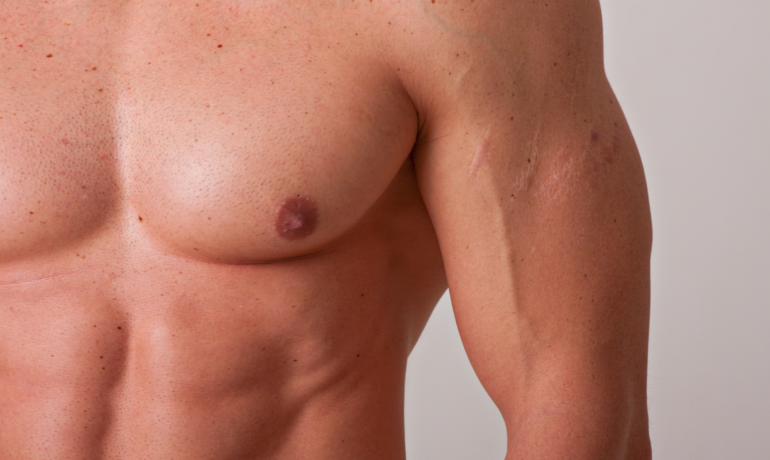Gynecomastia, characterized by the enlargement of male breast tissue, is a common condition that can affect individuals across different age groups. Often, men experiencing this condition seek effective solutions to restore their confidence and achieve a more masculine chest contour. While weight loss is frequently recommended for reducing excess fat in the chest area, it does not always address the underlying causes of gynecomastia. In such cases, Gynecomastia Surgery in Abu Dhabi or other specialized procedures may be necessary to achieve optimal results. This blog explores whether weight loss can replace gynecomastia surgery, highlighting the distinctions between fat reduction and surgical intervention, and providing comprehensive insights into treatment options.
The Role of Weight Loss in Managing Gynecomastia
Can Weight Loss Alone Resolve Gynecomastia?
Many individuals wonder if shedding excess weight through diet and exercise can eliminate gynecomastia. While weight loss can reduce fat deposits in the chest area, it does not typically address glandular tissue enlargement, which is often the primary component of true gynecomastia. Therefore, in cases where the breast tissue is significantly enlarged or fibrous, weight loss alone may not be sufficient. It is important to differentiate between pseudogynecomastia, caused by fat accumulation, and true gynecomastia, which involves glandular tissue growth.
Differentiating Between Pseudogynecomastia and Gynecomastia
Pseudogynecomastia occurs when excess fat deposits give the appearance of enlarged breasts, and it often responds well to weight loss efforts. Conversely, true gynecomastia involves proliferation of glandular tissue that does not diminish with weight loss. Proper diagnosis by a healthcare professional is crucial to determine whether lifestyle changes can effectively manage the condition or if surgical intervention is necessary.
Limitations of Weight Loss in Gynecomastia Treatment
Why Weight Loss May Not Be Enough
While weight management is beneficial for overall health and can improve the appearance of the chest in cases of pseudogynecomastia, it may not resolve true gynecomastia. The fibrous or glandular tissue requires targeted treatment. Relying solely on weight loss may leave individuals with persistent breast enlargement, leading to continued dissatisfaction and psychological impact. Therefore, understanding the limitations of lifestyle modifications is vital to set realistic expectations.
When to Consider Surgical Options
If weight loss efforts do not result in significant improvement, or if the breast enlargement persists despite healthy lifestyle changes, surgical options like Gynecomastia Surgery become relevant. Surgery aims to remove excess glandular tissue and deposits, providing a more definitive solution. Consulting with a qualified specialist can help determine the most suitable approach based on individual anatomy and goals.
The Benefits of Gynecomastia Surgery
Achieving a More Masculine Chest Contour
Gynecomastia surgery offers a targeted approach to contouring the chest, leading to a flatter, firmer appearance. It can dramatically improve self-confidence and allow individuals to engage in activities without embarrassment. The procedure is designed to remove excess tissue, reshape the chest, and restore a natural male contour.
Enhancing Physical Comfort and Psychological Well-being
Beyond aesthetics, the surgery can alleviate physical discomfort caused by enlarged breast tissue and reduce psychological distress related to body image. Many patients experience improved self-esteem and social confidence following the procedure, which positively impacts their overall quality of life.
The Surgical Procedure and Recovery Expectations
What the Surgery Involves
The surgical process typically involves making small incisions to access and excise the excess glandular tissue and fat. Techniques may vary depending on the extent of tissue enlargement and individual anatomy. The procedure is usually performed under general anesthesia or local anesthesia with sedation, ensuring patient comfort throughout.
Postoperative Care and Recovery
Post-surgery, patients can expect some swelling, bruising, and discomfort, which are managed with prescribed medications. Wearing compression garments helps reduce swelling and supports healing. Most individuals return to light activities within a few days, with full recovery taking several weeks. Adherence to postoperative instructions is essential for optimal results and minimizing complications.
Combining Lifestyle Changes with Surgical Intervention
Maintaining Results Through Healthy Habits
While surgery provides a permanent solution to excess glandular tissue, maintaining a stable weight is crucial to preserve the results. Engaging in regular exercise, adopting a balanced diet, and avoiding factors that can cause hormonal imbalances can help sustain a masculine chest contour.
The Importance of Professional Guidance
A comprehensive treatment plan involves collaboration with healthcare professionals who can offer personalized advice. They can recommend appropriate lifestyle modifications alongside surgical options, ensuring long-term satisfaction and health.
Conclusion: Is Surgery Necessary After Weight Loss?
In summary, weight loss can effectively reduce pseudogynecomastia caused by fat deposits in some cases. However, it does not usually replace Gynecomastia Surgery Abu Dhabi when true glandular tissue enlargement is involved. Surgical intervention offers a targeted, definitive solution to achieve the desired chest contour and improve confidence. Consulting with a qualified specialist is essential to determine the most appropriate approach based on individual needs and goals.
FAQs
1. Can I achieve a masculine chest without surgery through weight loss?
While weight loss can reduce fat deposits and improve chest appearance in cases of pseudogynecomastia, it may not be effective if glandular tissue is enlarged. A professional assessment can help determine if surgery is necessary.
2. How do I know if I need surgery for gynecomastia?
If your chest size remains enlarged despite healthy weight management and lifestyle changes, or if the tissue feels firm or fibrous, consulting a specialist is recommended to evaluate whether surgical intervention is appropriate.
3. Will weight loss affect the results of gynecomastia surgery?
Maintaining a stable weight post-surgery is important to preserve the results. Significant weight fluctuations can potentially alter the contour achieved through surgery.
4. Are there non-surgical treatments for gynecomastia?
Non-surgical options are limited and mainly include medication or hormonal therapy, which are typically effective only in specific cases. Surgical removal remains the most definitive treatment for persistent glandular gynecomastia.







